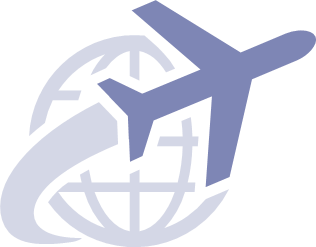 In the global context, resettlement refers to the selection and transfer of refugees from a state in which they have sought protection to a third state which has agreed to admit them as refugees with a permanent residence status.208 In the EU context, resettlement is initiated by a request from UNHCR based on a person’s need for international protection, and the third-country national is transferred from a third country and established in a Member State, where they are permitted to reside with one of the following statuses: refugee status, subsidiary protection status or any other status which offers similar rights and benefits under national and EU laws.209
In the global context, resettlement refers to the selection and transfer of refugees from a state in which they have sought protection to a third state which has agreed to admit them as refugees with a permanent residence status.208 In the EU context, resettlement is initiated by a request from UNHCR based on a person’s need for international protection, and the third-country national is transferred from a third country and established in a Member State, where they are permitted to reside with one of the following statuses: refugee status, subsidiary protection status or any other status which offers similar rights and benefits under national and EU laws.209Providing safe and legal pathways for persons in need of protection is a key priority for the European Commission, enabling the most vulnerable refugees to reach Europe without becoming victims of smuggling networks or undertaking dangerous journeys. The first European Resettlement Programme was launched in July 2015, and by December 2020, three successful resettlement programmes have assisted more than 76,000 people. Responding to a call by the European Commission, EU Member States pledged to resettle almost 30,000 refugees in 2020, representing 40% of all resettlement pledges worldwide.210
The COVID-19 pandemic disrupted resettlement initiatives due to restrictions on international travel. In its April 2020 guidance on asylum, return procedures and resettlement, the European Commission called on EU countries to continue preparatory operations to ensure a smooth resumption of resettlements as soon as possible. In addition, the European Commission encouraged Member States to consider new ways of keeping their resettlement programmes active, for example by:
| Accepting resettlement submissions on a dossier-basis and introducing video interviews and remote pre-departure orientation, including through the use of the EASO Resettlement Support Facility in Istanbul; | |
| Facilitating the continued arrival of persons who had already been selected for resettlement; | |
| Reviewing their resettlement operational plans to account for heightened health concerns; | |
| Making full use of the EASO Resettlement and Humanitarian Admission Network as the key forum for sharing information, developing new ways of working and jointly developing exit strategies; and | |
| Keeping communication channels open with sponsors about private sponsorship schemes.211 |
Accordingly, a number of EU+ countries adapted modalities to continue with their resettlement programmes. Throughout the year, despite the challenges caused by the COVID-19 pandemic, EU Member States remained engaged with UNHCR to identify ways to keep their resettlement programmes running.212
In this context, a total of 9,200 resettlements took place in 14 EU+ countries in 2020. 8,500 of them fell under the 2020-2021 programme, while another 770 were late arrivals from the previous scheme. The remaining 21,200 places from the 2020-2021 scheme should be filled in 2021. A targeted ‘mini pledge’, which will allow some Member States to top up the existing scheme, will be launched by the European Commission in 2021.
The new Pact on Migration and Asylum retained resettlement high on the agenda. It formalised the current ad hoc scheme through a new recommendation on legal pathways to protection in the EU. Apart from a call to scale up resettlement programmes, the pact places particular emphasis on humanitarian admissions and encourages the development of community sponsorship programmes through broader synergies with civil society and local communities.213 This diversifies the possible pathways to provide safe access to the EU for people in need of protection. Multi-stakeholder engagement allows for integrated capacity-building in host communities to better meet the specific needs of resettled persons and facilitate integration and inclusion.
In October 2020, UNHCR issued a set of recommendations to the EU on resettlement needs and key priorities for 2021. These included steps toward solidifying the EU's position as a leader in resettlement, identification of key priorities, recommendations for a predictable and sustainable EU programme with increased collaboration among relevant stakeholders, including EASO, and steps toward expanding complementary pathways.214

[208] Definition: European Migration Network. (2021, May 12). Glossary: resettlement. https://ec.europa.eu/home-affairs/what-we-do/networks/european_migration_network/glossary_search/resettlement_en
[209] Regulation (EU) No 516/2014 of the European Parliament and of the Council of 16 April 2014 establishing the Asylum, Migration and Integration Fund, amending Council Decision 2008/381/EC and repealing Decisions No 573/2007/EC and No 575/2007/EC of the European Parliament and of the Council and Council Decision 2007/435/EC. https://eur-lex.europa.eu/eli/reg/2014/516/oj
[210] European Commission. (2020, June 19). World Refugee Day, 20 June 2020: Joint Statement by the European Commission and the High Representative. https://ec.europa.eu/commission/presscorner/detail/en/statement_20_1128
[211] European Commission. (2020, April 16). Communication from the Commission, COVID-19: Guidance on the implementation of relevant EU provisions in the area of asylum and return procedures and on resettlement: C(2020) 2516. https://ec.europa.eu/info/sites/info/files/guidance-implementation-eu-provisions-asylum-retur-procedures-resettlement.pdf
[212] United Nations High Commissioner for Refugees. (October 2020). UNHCR Recommendations to the European Union: Resettlement Needs and Key Priorities for 2021. https://www.unhcr.org/publications/euroseries/5fb7e43a4/unhcr-recommendations-european-union-resettlement-needs-key-priorities.html
[213] European Commission. (2020, September 23). Commission Recommendation (EU) 2020/1364 of 23 September 2020 on legal pathways to protection in the EU: promoting resettlement, humanitarian admission and other complementary pathways. https://eur-lex.europa.eu/legal-content/GA/TXT/?uri=CELEX:32020H1364
[214] United Nations High Commissioner for Refugees. (October 2020). UNHCR Recommendations to the European Union: Resettlement Needs and Key Priorities for 2021. https://www.unhcr.org/publications/euroseries/5fb7e43a4/unhcr-recommendations-european-union-resettlement-needs-key-priorities.html




